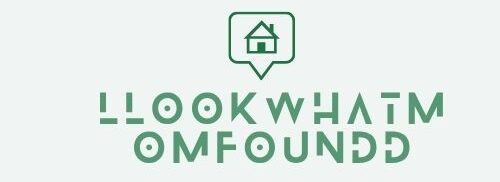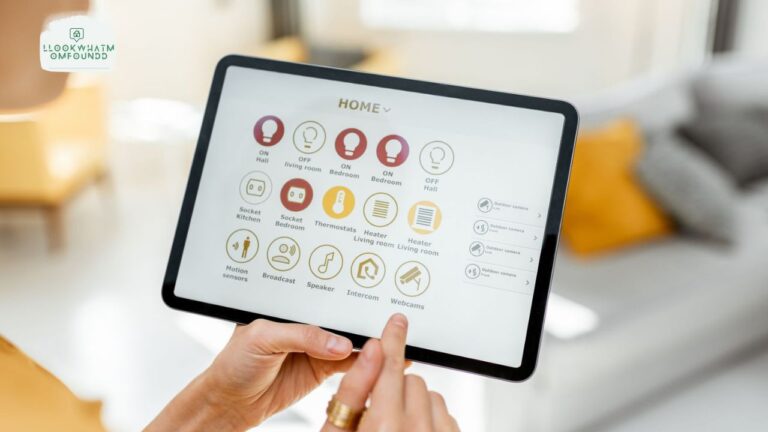The movement to create a new generation of kickass futuretechgirls is gaining incredible momentum. We are witnessing a powerful shift, a global effort to equip young women with the skills, confidence, and opportunities they need to excel in science, technology, engineering, and mathematics (STEM). This isn’t just about closing a gender gap; it’s about unlocking a massive reservoir of untapped talent that will define our future.
For too long, the tech world has been a male-dominated arena. But a groundswell of change is being driven by remarkable organizations, inspiring mentors, and, most importantly, the ambitious young women themselves. These are the future leaders, the innovators, and the problem-solvers who will build a better, more inclusive world. They are the kickass futuretechgirls, and their story is just beginning.
This article explores the vibrant ecosystem that is nurturing these future tech titans. We will look into the organizations leading the charge, celebrate the trailblazers who are paving the way, and understand the profound impact this movement is having on society. Get ready to be inspired by the sheer determination and brilliance of these young pioneers.
The Kickass FutureTechGirls Movement: A Snapshot
The drive to empower young women in tech is not a singular effort but a collection of dynamic initiatives. Each plays a crucial role in building the pipeline of future innovators. Here’s a look at some of the key players and their incredible contributions.
| Organization Name | Mission | Key Achievements & Impact |
|---|---|---|
| Girls Who Code | To close the gender gap in technology and to change the image of what a programmer looks like and does. | Served over 580,000 students through various programs; alumni are majoring in computer science at 15 times the national average. |
| Black Girls CODE | To build a new generation of coders, leaders, and creators by providing African-American youth with the skills to succeed in tech. | Reached over 30,000 students across the U.S. and in South Africa, offering workshops, summer camps, and enrichment programs. |
| Technovation Girls | Equips young women (ages 8-18) to become tech entrepreneurs and leaders through a global competition. | Over 400,000 participants from 120+ countries have developed mobile apps to solve real-world community problems. |
| Kode With Klossy | Creates learning experiences for young women that increase their confidence and inspire them to pursue their passions in a tech-driven world. | Provided free two-week coding bootcamps to nearly 8,000 scholars, fostering a strong community of future female tech leaders. |
These organizations are the engine behind the movement, creating a generation of kickass futuretechgirls ready to take on the world.
The Stark Reality: Why We Need More Women in Tech
The call for more women in technology isn’t just about fairness; it’s an economic and innovative imperative. The statistics paint a clear picture of the current landscape and highlight the urgent need for change.
A Glaring Gender Gap
Despite making up nearly half of the U.S. workforce, women hold only about 26% of computing jobs. This disparity is even more pronounced for women of color. Black women represent a mere 3% of the computing workforce, and Hispanic women just 2%. This isn’t a pipeline problem; it’s a “leaky pipeline” issue. Women often leave the tech industry at a rate 45% higher than men, citing workplace culture, lack of advancement opportunities, and isolation.
These numbers represent a massive loss of potential. Without diverse perspectives, the tech industry risks creating products and solutions that cater to a narrow segment of the population, missing huge market opportunities and failing to address the complex problems our global society faces. Creating more kickass futuretechgirls is the solution.
The Economic and Innovative Advantage
Bringing more women into tech is simply good business. Studies have consistently shown that companies with greater gender diversity on their leadership teams are more profitable and innovative. A diverse team brings a wider range of experiences, perspectives, and problem-solving approaches, leading to better decision-making and more creative outcomes.
When teams reflect the diversity of their users, they are better equipped to understand and meet customer needs. This leads to more successful products and a stronger bottom line. Fostering a new wave of kickass futuretechgirls is not just a social goal; it’s a strategic necessity for any forward-thinking economy.
Forging the Path: Profiles of Trailblazing Organizations
Several organizations have become beacons of hope and change, creating structured pathways for young women to enter and thrive in the tech world. Their work is instrumental in building the confidence and skills of the next generation of tech leaders.
Girls Who Code: Building a Sisterhood of Coders
Founded by Reshma Saujani in 2012, Girls Who Code has become a household name in the movement to empower young women in tech. Its mission is simple but powerful: to close the gender gap in technology. They do this by creating a supportive and inspiring “sisterhood” where girls can learn to code and see themselves as future computer scientists.
Programs and Impact
Girls Who Code offers a range of programs tailored to different age groups. Their Clubs, which are free after-school programs for 3rd-12th grade girls, have spread across the world. Their Summer Immersion Programs provide high school students with an intensive, two-week deep dive into computer science, robotics, and web design, often hosted at top tech companies.
The results are staggering. Girls Who Code alumni are choosing to major in computer science or related fields at a rate 15 times the national average. This organization is directly responsible for creating a massive cohort of kickass futuretechgirls who are now entering college and the workforce with a strong foundation in technology.
User Reviews and Testimonials
The impact of Girls Who Code is best told through the words of its participants. Online forums and reviews are filled with praise.
- “Girls Who Code changed my life. Before the program, I never thought I could be a programmer. Now, I’m a computer science major at my dream university. It gave me the confidence and the community I needed.” – Rating: 5/5 Stars
- “The instructors were amazing, and I loved learning alongside other girls who were just as excited about tech as I was. It was the first time I didn’t feel alone in my interest.” – Rating: 5/5 Stars
These testimonials highlight the dual impact of the program: technical skill-building and invaluable community support.
Black Girls CODE: Unlocking Potential and Creating Leaders
Kimberly Bryant founded Black Girls CODE in 2011 after her daughter expressed an interest in coding but felt isolated as one of the few girls of color in a summer camp. Bryant’s vision was to create a movement to introduce programming and technology to a new generation of coders, specifically young and pre-teen girls of color.
Mission and Vision
Black Girls CODE aims to provide African-American youth with the skills to occupy the digital space as builders and creators. Their vision is to increase the number of women of color in the digital space by empowering girls of color ages 7 to 17 to become innovators in STEM fields, leaders in their communities, and builders of their own futures. This focus is critical for nurturing a diverse group of kickass futuretechgirls.
Workshops and Reach
From one-day robotics workshops to year-long enrichment programs, Black Girls CODE has created a vibrant ecosystem of learning. They have established chapters in numerous U.S. cities and even expanded internationally to South Africa. Their work directly addresses the intersectional challenges that young Black women face when trying to enter the tech industry, providing them with role models, mentors, and a safe space to learn and grow.
The organization’s success demonstrates the immense demand and untapped potential within communities of color. Each workshop and event helps build a powerful network of future kickass futuretechgirls.
Technovation Girls: Solving Real-World Problems with Tech
Technovation Girls, a program by the global tech education nonprofit Technovation, takes a unique approach. It invites teams of girls from all over the world to learn and apply the skills needed to solve real-world problems through technology.
The Global Competition
The core of the program is its annual competition. Girls ages 8-18 work in teams to identify a problem in their community and then build a mobile app to help solve it. Along the way, they learn how to code, write a business plan, and pitch their idea to experts. This project-based approach makes learning tangible and incredibly empowering.
Participants have created apps to address everything from food waste and water scarcity to mental health and domestic violence. This hands-on experience transforms them from consumers of technology into creators and entrepreneurs. It’s a powerful method for inspiring kickass futuretechgirls who are not just technically proficient but also socially conscious.
Global Impact and Alumnae Success
With over 400,000 participants from more than 120 countries, Technovation Girls has a truly global reach. Its alumnae have gone on to study at top universities, launch their own companies, and become leaders in their fields. The program doesn’t just teach coding; it teaches critical thinking, collaboration, and leadership—skills that are essential for success in any career. The program is a proven incubator for the world’s next kickass futuretechgirls.
The Role Models: Inspiring the Next Wave
Visibility is crucial. Young girls need to see women who look like them succeeding in tech to believe that they can do it too. The women who have broken barriers and reached the pinnacle of the tech industry serve as powerful role models for the aspiring kickass futuretechgirls of tomorrow.
Karlie Kloss: From Supermodel to Coding Advocate
Karlie Kloss, a world-famous supermodel, might seem like an unlikely figure in the tech world. However, her journey into coding and her subsequent founding of Kode With Klossy make her one of the most visible and influential advocates for women in tech.
The Birth of Kode With Klossy
After taking a coding class herself, Kloss was fascinated by the creative power of programming. She realized that coding was a language of the future and was shocked by the lack of women in the field. This realization inspired her to launch Kode With Klossy in 2015.
The organization offers free, two-week summer coding camps for young women and gender-expansive youth aged 13-18. The curriculum covers the fundamentals of programming languages like JavaScript, Swift, and Python, empowering scholars to build real web applications and mobile apps.
Personal Background and Influence
As a globally recognized figure with millions of followers, Karlie Kloss has a unique platform. Her personal net worth, estimated to be around $40 million, gives her the financial ability to fund and scale her educational initiatives. More importantly, her advocacy normalizes the idea that interests in fashion and technology are not mutually exclusive.
She has effectively made coding “cool” for a generation of young women who might not have otherwise considered it. Her work is a testament to the power of using one’s platform for social good, and she has been instrumental in inspiring thousands of kickass futuretechgirls.
Reshma Saujani: A Fearless Fighter for Girls in Tech
Reshma Saujani is an attorney, politician, and the founder of Girls Who Code. Her relentless advocacy and her “Teach Girls Bravery, Not Perfection” TED Talk have made her a leading voice in the conversation about gender equality.
A Political Awakening
Saujani’s journey began in the political arena. During her run for Congress, she visited schools and was struck by the stark gender disparity in computer science classrooms. This observation planted the seed for what would become Girls Who Code. She realized that to fix the problem, she needed to intervene early and change the culture around technology.
Building a Movement
Under Saujani’s leadership, Girls Who Code grew from a small pilot program of 20 girls in New York City to a global movement that has reached hundreds of thousands. Her leadership has been crucial in securing partnerships with major tech companies, raising millions in funding, and keeping the issue of women in tech at the forefront of the public consciousness. She is a true champion for all aspiring kickass futuretechgirls.
Her work has been absolutely pivotal. By creating a scalable model, she has ensured that the mission to cultivate a diverse group of kickass futuretechgirls will continue for years to come.
The Curriculum of Empowerment: What Are They Learning?
The programs designed for kickass futuretechgirls go far beyond simply teaching lines of code. They offer a holistic curriculum designed to build well-rounded, confident, and capable leaders.
Core Technical Skills
At the heart of these programs are the foundational technical skills that form the bedrock of a career in tech.
- Programming Languages: Students learn popular and versatile languages like Python, JavaScript, and Swift. Python is often a starting point due to its readable syntax, while JavaScript is essential for web development, and Swift is the gateway to iOS app creation.
- Web Development: This includes learning HTML for structure, CSS for styling, and JavaScript for interactivity, allowing girls to build their own websites and web applications from scratch.
- Mobile App Development: Programs like Technovation Girls and Kode With Klossy empower students to design and build mobile apps for iOS or Android, taking an idea from concept to a functional product.
- Robotics and AI: Some programs introduce concepts of robotics, machine learning, and artificial intelligence, exposing girls to the cutting edge of technology and sparking their curiosity about the future.
Essential Soft Skills
Technical proficiency is only half the battle. These initiatives place a heavy emphasis on developing the soft skills that are crucial for long-term success.
Collaboration and Teamwork
Many of the programs are project-based and require girls to work in teams. This teaches them invaluable lessons about communication, compromise, and leveraging individual strengths to achieve a common goal. This mirrors the collaborative nature of modern tech workplaces.
Problem-Solving and Critical Thinking
Instead of rote memorization, the curriculum focuses on problem-solving. Girls are presented with real-world challenges and encouraged to think critically and creatively to devise technological solutions. This develops a “builder” mindset that is essential for innovation.
Leadership and Public Speaking
From pitching an app idea to presenting a final project, girls are given numerous opportunities to develop their public speaking and leadership skills. This builds their confidence and prepares them to be vocal advocates for their ideas in their future careers. Developing these skills is what turns a student into a true kickass futuretechgirls leader.
Building a Community and Network
Perhaps the most important element is the sense of community. By bringing girls together, these programs create a supportive network, a “sisterhood” of peers and mentors. This combats the isolation that many women feel in tech and provides a lifelong support system. This community is the backbone of the kickass futuretechgirls movement.
Overcoming the Hurdles: Challenges on the Path
The journey to becoming a leader in tech is not without its obstacles. Aspiring kickass futuretechgirls face a unique set of challenges that these programs are designed to help them navigate.
Impostor Syndrome and Lack of Confidence
Impostor syndrome—the feeling of being a fraud despite evidence of success—is rampant in the tech industry, and it disproportionately affects women. Programs for kickass futuretechgirls tackle this head-on by creating a supportive environment where it’s safe to fail and ask questions. Celebrating small wins and emphasizing progress over perfection helps build the resilience needed to overcome self-doubt.
Cultural Bias and Stereotypes
The stereotypical image of a “tech bro” in a hoodie can be incredibly alienating. Girls often internalize the message that tech is not for them. These programs actively work to dismantle this stereotype by showcasing diverse female role models and changing the image of what a programmer looks like and does. Every successful alumna becomes a new role model, reinforcing the idea that kickass futuretechgirls come from all backgrounds.
The “Leaky Pipeline”
Getting girls interested in tech is the first step. Keeping them in the field is the next major challenge. The “leaky pipeline” refers to the high attrition rate of women in tech careers. Mentorship is a key strategy to combat this. By connecting young women with experienced female professionals, these programs provide guidance, support, and a clear vision of what a long-term career in tech can look like. This mentorship is vital for the sustained success of the kickass futuretechgirls movement.
The Long-Term Vision: A More Inclusive Tech Future
The ultimate goal of the kickass futuretechgirls movement extends far beyond individual success stories. It is about fundamentally reshaping the tech industry to be more innovative, equitable, and representative of the world it serves.
Technology That Serves Everyone
When the teams building technology are diverse, the technology itself is better. A more inclusive tech industry will create products and services that are more accessible, user-friendly, and relevant to a wider audience. We will see fewer biased algorithms and more solutions to problems that affect marginalized communities. The future built by these kickass futuretechgirls will be a future built for everyone.
Economic Empowerment and Social Mobility
A career in technology offers a powerful pathway to economic empowerment. By equipping young women, particularly those from underrepresented backgrounds, with high-demand skills, these programs provide a direct route to financial independence and social mobility. This has a ripple effect, uplifting not just individuals but entire families and communities. The economic impact of cultivating legions of kickass futuretechgirls cannot be overstated.
A New Generation of Leaders
The skills learned in these programs—coding, problem-solving, collaboration, leadership—are transferable to any field. Whether they become software engineers, CEOs, politicians, or artists, the kickass futuretechgirls of today will be the leaders and changemakers of tomorrow. They will bring a tech-savvy, problem-solving mindset to every industry, driving innovation and progress across the board. The world will be a better place with more kickass futuretechgirls at the helm.
The movement is strong, the momentum is building, and the future is bright. The age of the kickass futuretechgirls is here, and they are ready to build a better world for us all.
Frequently Asked Questions (FAQs)
Q: How can my daughter get involved with one of these programs?
A: The best way is to visit the websites of the organizations mentioned, like Girls Who Code, Black Girls CODE, or Technovation Girls. They list their local chapters, online programs, and application deadlines. Many have free clubs or resources that are easily accessible.
Q: What if there isn’t a local chapter in my area?
A: Many of these organizations now offer robust online programs and virtual clubs. This has made their curriculum accessible to girls anywhere in the world. Kode With Klossy, for example, has a strong virtual component. You can also find countless free tutorials and resources on sites like Code.org and Khan Academy.
Q: Are these programs only for girls who want to be professional coders?
A: Not at all! The goal is to teach computational thinking and problem-solving skills that are valuable in any career. While many alumnae do pursue tech careers, many others go into fields like medicine, law, art, and business, applying their tech skills in innovative ways. The aim is to create well-rounded kickass futuretechgirls who are prepared for any path.
Q: My daughter is interested but feels intimidated. What’s the best first step?
A: Start small and make it fun. An “Hour of Code” activity on Code.org is a great, low-pressure introduction. Look for workshops or one-day events that are designed for beginners. The most important thing is to find a supportive environment where she feels comfortable learning and making mistakes. The community aspect of these programs is designed specifically to overcome that initial intimidation.
Q: How can I support the kickass futuretechgirls movement?
A: There are many ways! You can volunteer your time as a mentor or instructor if you have a tech background. You can donate to these non-profit organizations to help them expand their reach. You can also be an advocate in your own community—encourage schools to offer more computer science classes and challenge stereotypes about who belongs in tech. Supporting the kickass futuretechgirls movement is an investment in our collective future.

















